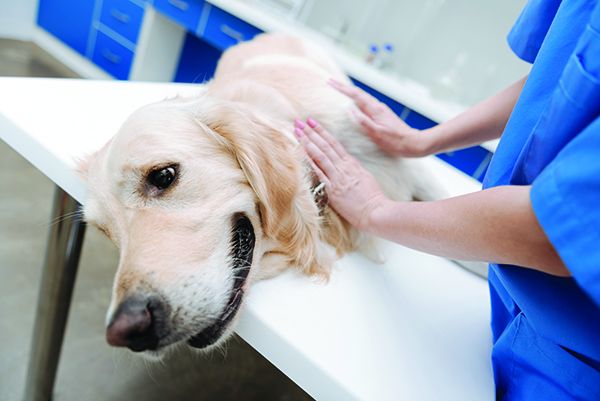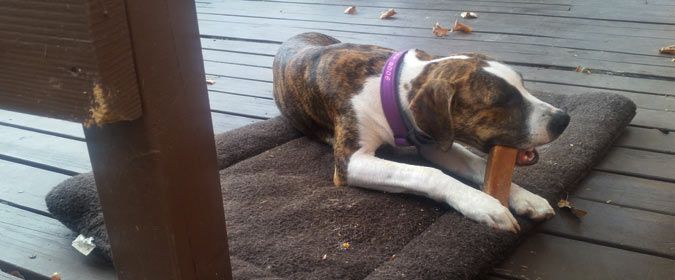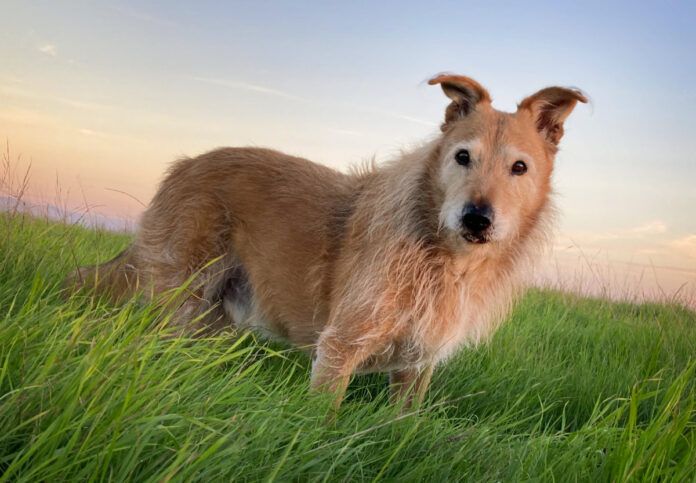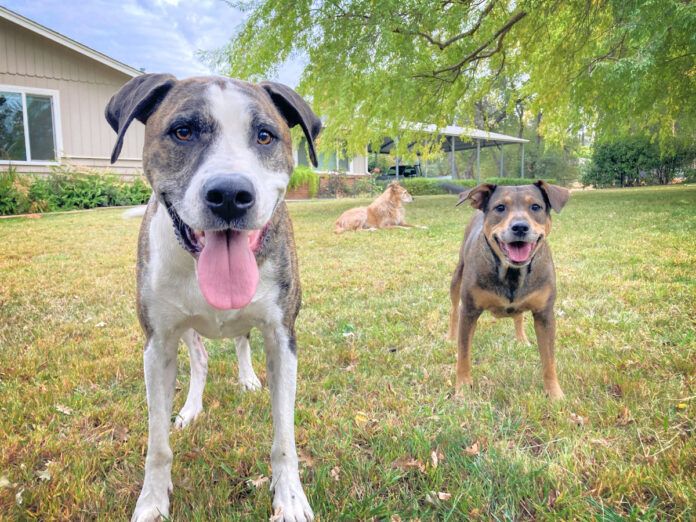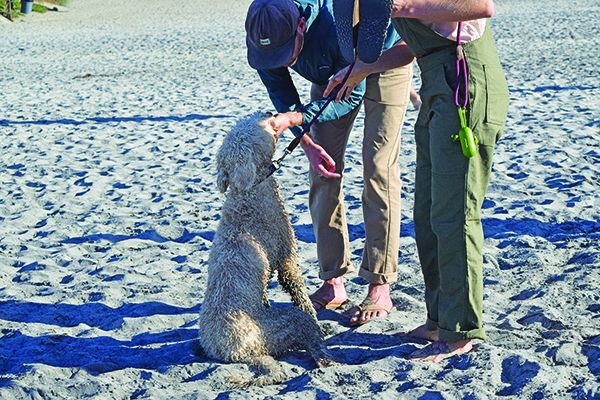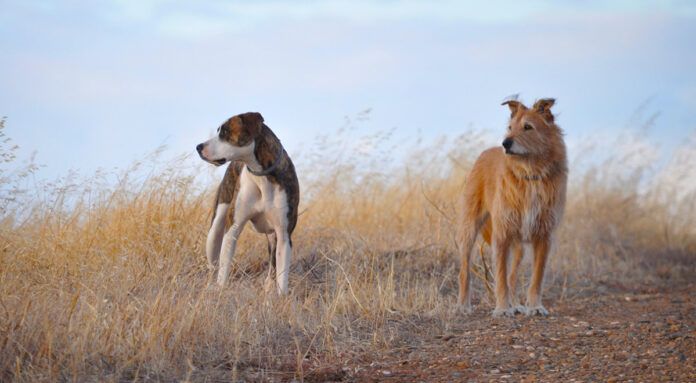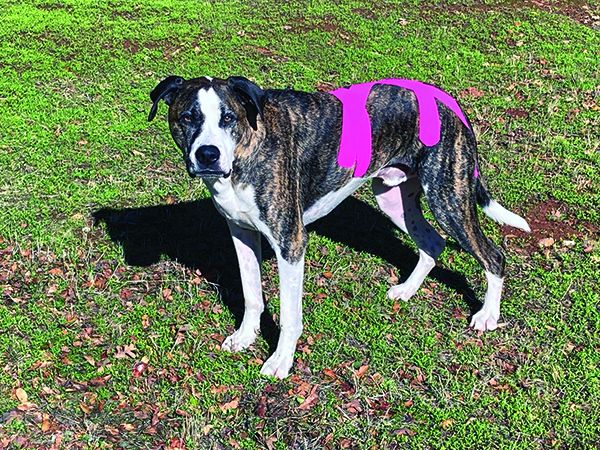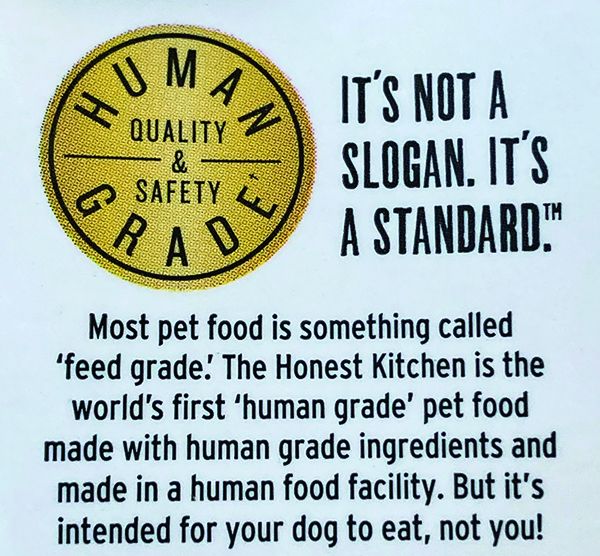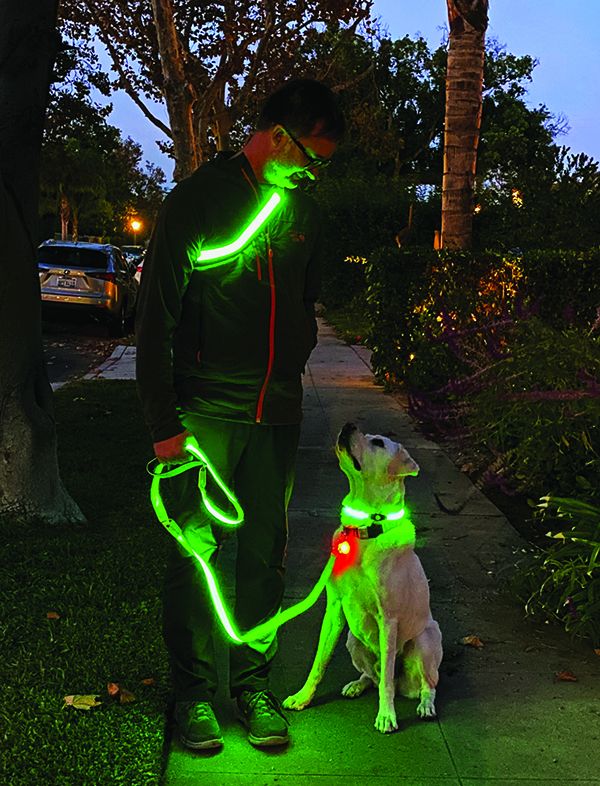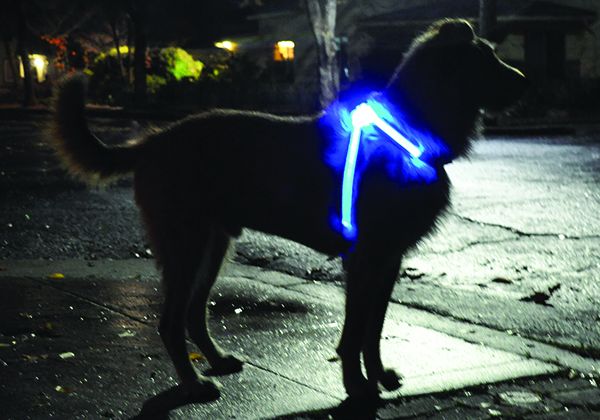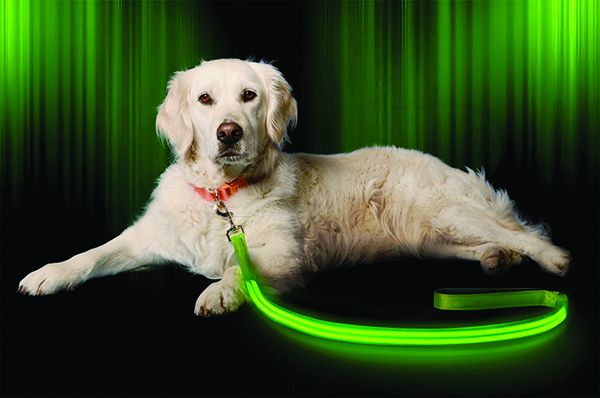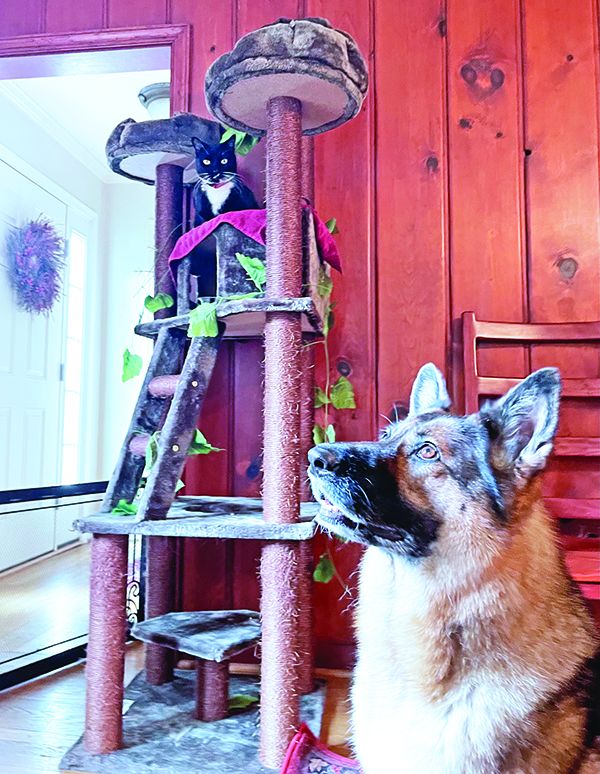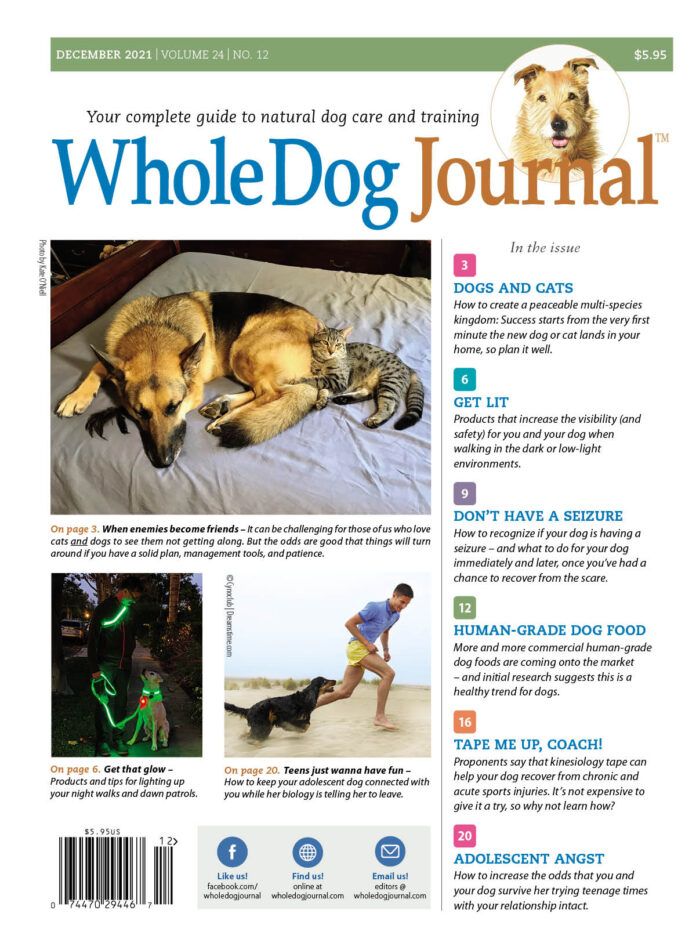Most of us appreciate the circulatory system and understand how the heart pumps blood through arteries, veins, and capillaries, but few of us know nearly as much about the lymphatic system. Well, it’s time to catch up! The lymphatic system is essential to health and well-being, so learning how to support this often-overlooked system will help your dog live a longer, more active, and healthier life.
Lymph is a clear or milky fluid that flows through a network of vessels known as lymphatics as well as through lymph nodes, bone marrow, the thymus gland, and the spleen. Lymph contains fats, proteins, and white blood cells called lymphocytes. While often described as the body’s garbage or sanitation system, it also delivers nutrients to muscles and tissues.
The lymphatic system absorbs excess fluid and returns it to the bloodstream, absorbs fat from the digestive tract, transports white blood cells and certain proteins, and produces antibodies or immunoglobulins.
When lymph circulation is impaired because of illness or accidents, health problems develop. The most common lymph-related disorders in dogs include:
- Lymphoma or lymphosarcoma (a malignant cancer)
- Lymphadenopathy (a lymph node enlargement)
- Lymphadenitis (inflammation of the lymph nodes)
- Lymphedema (an accumulation of lymph in the soft tissues of one or more legs)
While those conditions require medical diagnosis and treatment, learning how to improve your dog’s lymph circulation can help prevent problems before they occur. Some signs of lymph stagnation include arthritis, painful joints, eye drainage, crusty or itchy skin, dull eyes, lethargy, and frequent infections reflecting low immune function.
Here are 10 approaches you can use at home or with the help of veterinary experts to give your dog’s lymphatic system a tune-up:
1. Exercise is, hands down, the fastest way to improve lymph circulation in dogs. Vigorous exercise stimulates the movement of both blood and lymph, increasing the supply of oxygen to tissues throughout the body and enhancing the removal of toxins from organs and muscles. Deep breathing increases the flow of lymph, which is why the rib cage is considered a major lymphatic pump and one of the reasons why breathing exercises are recommended for humans.
Dogs in motion have no trouble breathing deeply and activating their rib cages, so whatever physical movement your dog can comfortably manage will help. Sedentary dogs are at risk because when lymph becomes stagnant, pathogenic substances, inflammatory markers, and cellular debris can interfere with the immune response. Daily exercise, even at a moderate pace, can improve your dog’s lymph circulation, as can stretching and bowing.
2. Dry skin brushing is an Ayurvedic practice from ancient India that has become popular in alternative and complementary medicine. The lymphatic system is close to the surface of the skin, so moving the lymph doesn’t require the deep pressure used for massaging muscles. In humans, a coarse bristle brush, such as a traditional Japanese bath brush, is moved along the skin in sweeping strokes from the soles of the feet and the palms of the hands toward the heart.
Similarly, daily brushing with a firm-bristle grooming brush can stimulate your dog’s lymph system. Try brushing from the feet toward the heart, and brush gently over the abdomen’s bare skin.
3. Lymphatic massage is another popular lymph-moving technique, and it’s so effective that you may want to become an expert. In her book Canine Massage for the Athlete in Every Dog, C. Sue Furman, Ph.D., describes how to apply effleurage, the most frequently used Swedish massage stroke, to stimulate the flow of lymph.
Effleurage resembles petting, Furman explains, which is why it is referred to as “petting with a purpose.” Glide over the surface of the coat with your open hand, always moving toward the heart, which is how the venous blood flows. “This is why effleurage of the limbs is performed from the knee toward the hip and from the toes toward the knee,” she explains in her book. “This may feel unusual as hands move opposite to the direction that the dog’s hair grows, but it is important to maintain healthy vessels in the circulatory and lymph systems.”
North Carolina veterinarian Roger DeHaan, DVM, an expert on holistic pet care, recommends vigorously rubbing your dog’s right side, over the last three ribs, for 10 to 15 seconds once a day to stimulate the flow of lymph. Again, deep pressure is not required.
For a 10-minute demonstration of lymphatic canine massage using manual manipulation, check out the video by PetMassage founder Jonathan Rudinger at bit.ly/WDJ-dog-lymph-massage. He recommends simple motions such as gently lifting the dog’s legs, turning the neck, and rocking the body, especially for older dogs, those recovering from injuries, and dogs who may not be able to get much outdoor exercise.
For additional dog-massage resources, see “Dog Massage Instruction,” WDJ August 2021.

Photo Credit: Sylvie Pabion /Dreamstime.com
4. Acupuncture is widely recommended for its stimulating effect on lymph circulation. “When a needle is inserted,” explains Montana veterinary acupuncturist Kelli Ator, DVM, “the initial mechanical stimulation to the cells induces a neurochemical release that causes biochemical and physiological changes through the stimulation of the nervous system. This neurostimulation results in both local and systemic effects resulting in vasodilation, thereby increasing venous and lymphatic return.”
To find a licensed veterinary acupuncturist, visit the American Holistic Veterinary Medical Association at AHVMA.org, click on “Find a Vet,” and search for acupuncture. You can also find veterinary acupuncturists through the International Veterinary Acupuncture Society, IVAS.org.
5. Acupressure is a form of acupuncture but without needles. It uses the same “acupoints” as acupuncture and applies gentle finger pressure to specific points for half a minute or so. Acu-Dog: A Guide to Canine Acupressure by Amy Snow and Nancy Zidonis (2011, Tallgrass Publishers, 188 pages) is a good introductory/how-to book about canine acupressure.
6. Red light therapy, also known as Photobiomodulation Therapy (PBMT), Low Level Laser Therapy (LLLT), or cold laser therapy, is growing in popularity for both human and canine patients. “Rather than using a mechanical stimulus,” says Dr. Ator, “a laser uses specific light wavelengths to induce a photochemical reaction in the mitochondria when the light photons are absorbed by the cell’s chromophores. The result of this cellular reaction is akin to the chain of events that occurs once the cells are stimulated by acupuncture, whereby the neurochemical process leads to improved circulation, decreased inflammation and edema, and decreased pain.”
Between 1967 and 2009, more than 100 phase III, randomized, double-blind, placebo-controlled clinical trials supported by over 1,000 laboratory studies investigated the effectiveness of Low Level Laser Therapy, leading researchers to conclude that further advances will lead to greater acceptance of LLLT in mainstream medicine.
Red light therapy is recommended for the treatment of lymph-related conditions, but the marketplace is confusing. There are so many options – not just lasers but also medical-grade LED lights and infrared red lights – and no clinical trials have been conducted to determine which device might be most effective for which specific conditions in dogs. Veterinary lasers can cost $30,000 or more, outside the means of most dog owners. The best way to try red light therapy may be to work with a veterinary chiropractor or veterinary acupuncturist who offers this therapy.
7. Improving the diet is a sensible strategy because inferior ingredients can interfere with lymph circulation. For dogs, upgrading the diet often means reducing or eliminating corn, soy, and other inexpensive grains while improving the quality of protein. WDJ’s reviews of dry, canned, frozen, freeze-dried, and home-prepared diets can keep you up to date on trends in canine nutrition.
Adding enzyme supplements, prebiotics, probiotics, and other digestive aids can help as well. Beets are known for their ability to help cleanse the liver, and Dr. DeHaan adds beets to food to help the lymph system capture toxins and transport them to the liver for removal. His recommendation for long-term administration calls for adding 1/4 teaspoon grated fresh raw beets per 15 pounds of body weight once a day for five days, letting the body rest for two days, and resuming in a five days on, two days off pattern for as long as desired.
8. Hydration is as important as nutrition when it comes to lymph circulation. Water is the principal ingredient in blood and lymph, so having enough of it helps the body transport oxygen, move infection-fighting white blood cells, and aid digestion.
Unfortunately, water from less-than-perfect sources can introduce contaminants such as prescription drug residues, preservatives, radioactive substances, heavy metals, organic chemicals, parasites, and harmful microorganisms.
Is your water safe to drink? Check with local sources to learn what’s in your tap or well water. You may decide to purchase bottled water (look for well-known brands that document their products’ safety) or purify your tap water with a whole-house, faucet, or counter-top filter, or investigate home water distillers. For options, see “Drinking the Purest Water Possible Is Important to Your Dog’s Health,” March 2002. Improving the quality of your dog’s water can pay important health dividends.

9. Medicinal herbs have been used for centuries to help people and animals maintain their health, and one of the herbs most associated with the lymph system is cleavers (Galium aparine), which is available freshly grown or as a tincture sold in natural markets, herb shops, and online retailers.
According to Mary Wulff and Greg Tilford in their book Herbs for Pets: The Natural Way to Enhance Your Pet’s Life, “Cleavers is used in virtually any condition that is characterized by general or localized swelling or in situations where lymphatic circulation has been impaired by the formation of scar tissue, ulceration, or infection. Although the activities of cleavers are subtle, the herb is believed to increase circulation of lymph in impaired areas of the body through dilation of small, almost cellular-level capillaries.”
A typical starting dose of a glycerin tincture of cleavers for dogs (preferred by many herbalists over alcohol tinctures when feeding animals) is 0.5 to 1.0 milliliter (10 to 20 drops) per 50 pounds of body weight, twice daily. Check labels to be sure your tincture was produced from the fresh (not dried) plant, as recommended by Wulff and Tilford.
Another lymph-friendly herb is calendula (Calendula officinalis), whose cheerful orange and yellow flowers brighten any garden. “Calendula tea or tincture is my favorite herbal treatment for lymph system support,” said Vermont herbalist Rosemary Gladstar in “How to Use Calendula on Dogs,” WDJ April 2008.
Wulff and Tilford recommend adding up to 1 teaspoon dried or 1 tablespoon fresh flower petals per 20 pounds of body weight daily to food.
10. Topical application of essential oils can support lymph circulation and immune function. Essential oils are the highly concentrated distilled essences of plants. Colorado aromatherapist Frances Fitzgerald Cleveland, who educates pet owners on the use of essential oils, calls grapefruit her go-to essential oil for the lymph system. She dilutes seven drops of grapefruit essential oil in 5 ml (1 teaspoon) safflower oil and stores the blend in an airtight glass container or in a 5-ml self-dispensing dropper bottle.
“I place a dime-size amount in the palm of my hand,” she says, “rub my hands together, let my dog sniff my hands, and then lightly place my hands on his hind paws and slowly and lightly move my hands up his legs, over his back, to the top of his head. I repeat this same touch from the back of the stomach to his chest, repeat on his sides, and repeat from the front of his paws up to his chin.”
Cleveland calls this treatment “feather massage,” and says her dogs enjoy it. “I use this approach for pain, lethargy, edema in the feet or limbs, sluggish digestion, support while taking pain medications, plus for comfort, insomnia, depression, and recovering from an injury or surgery.” To boost a dog’s immunity or to treat a specific condition, she recommends doing this once per day, and for routine maintenance, one to three times per week.


